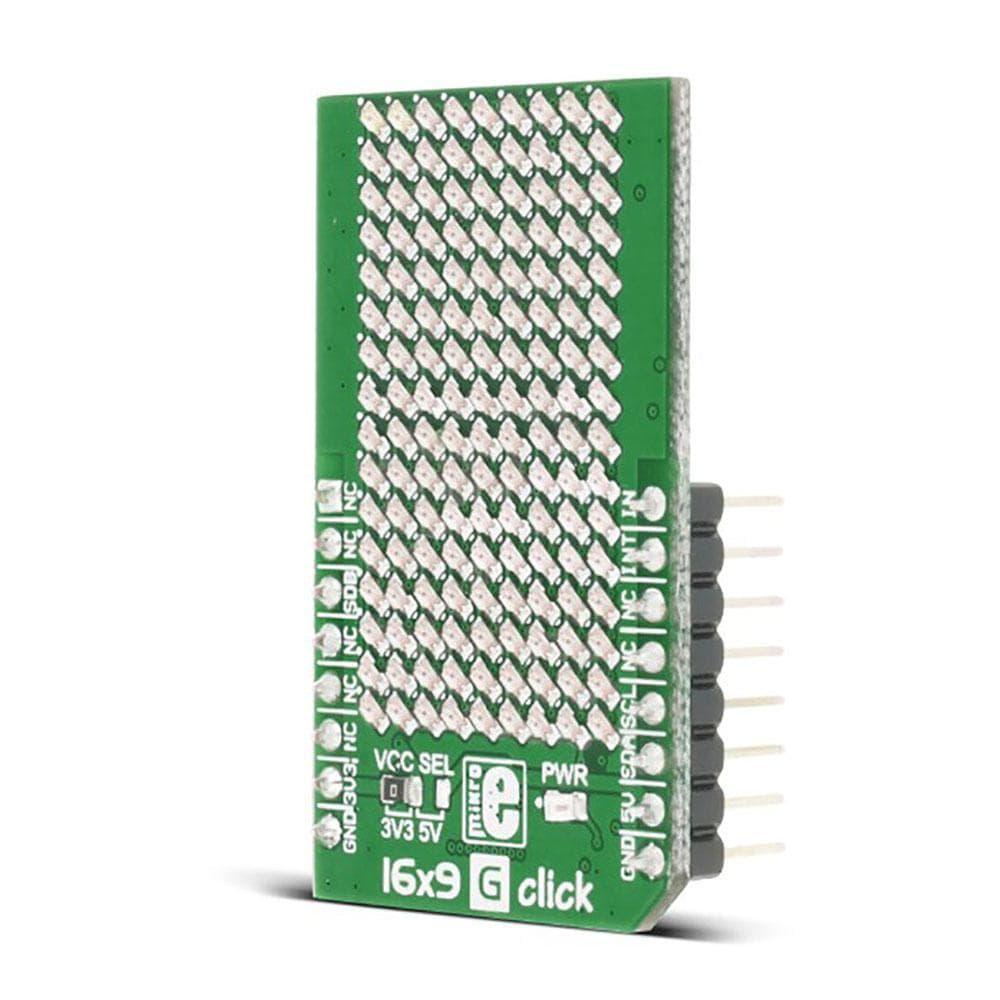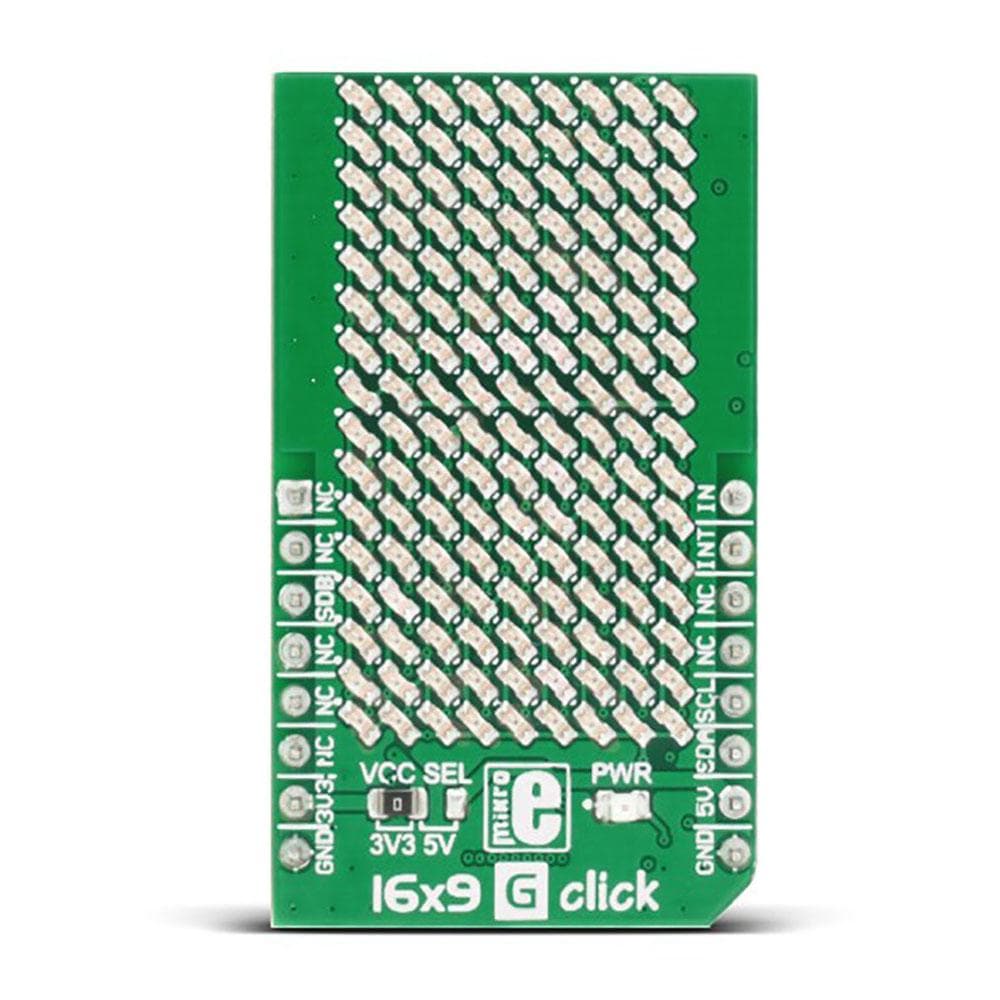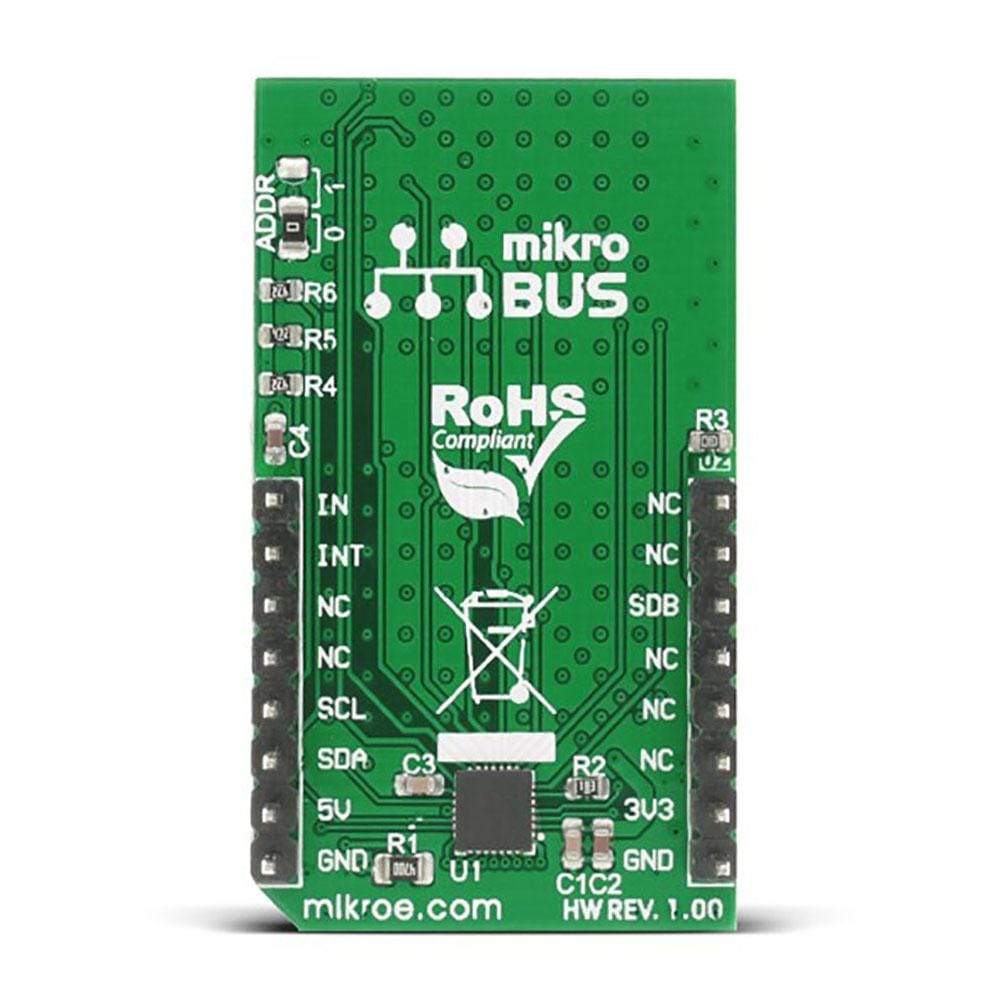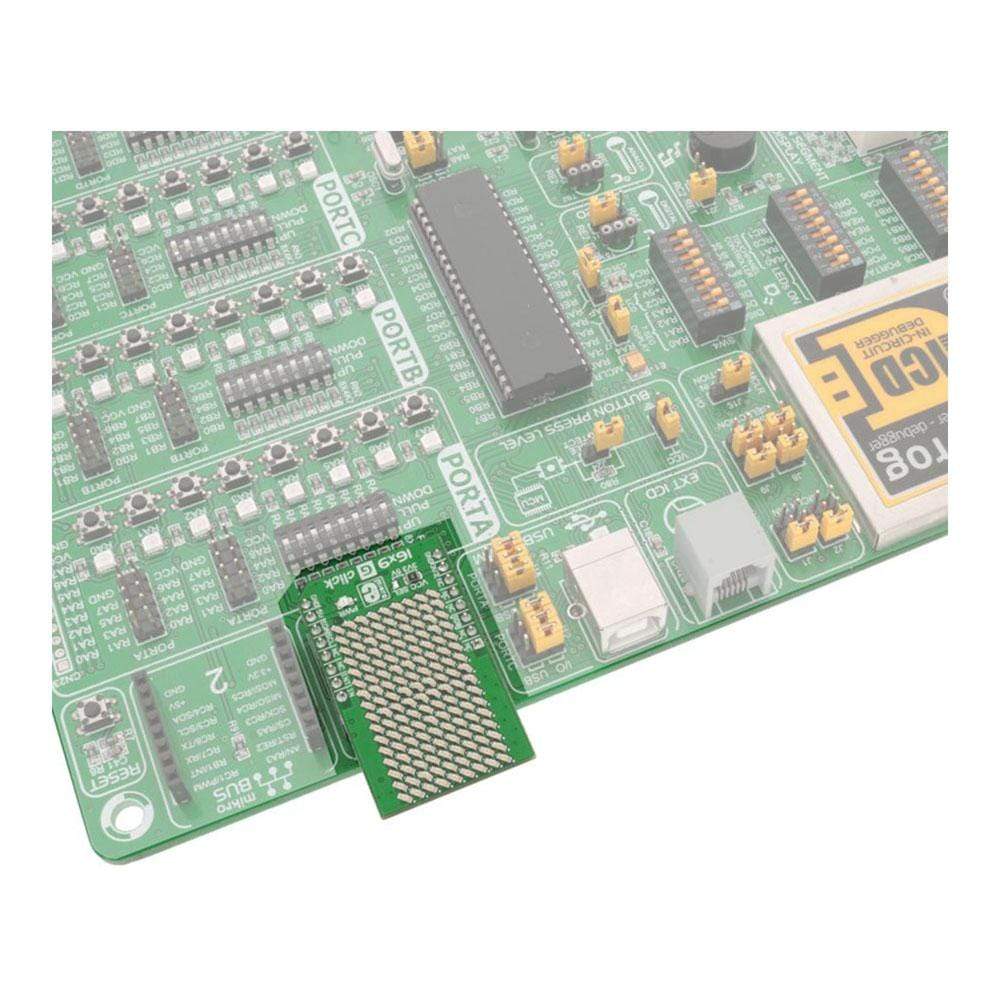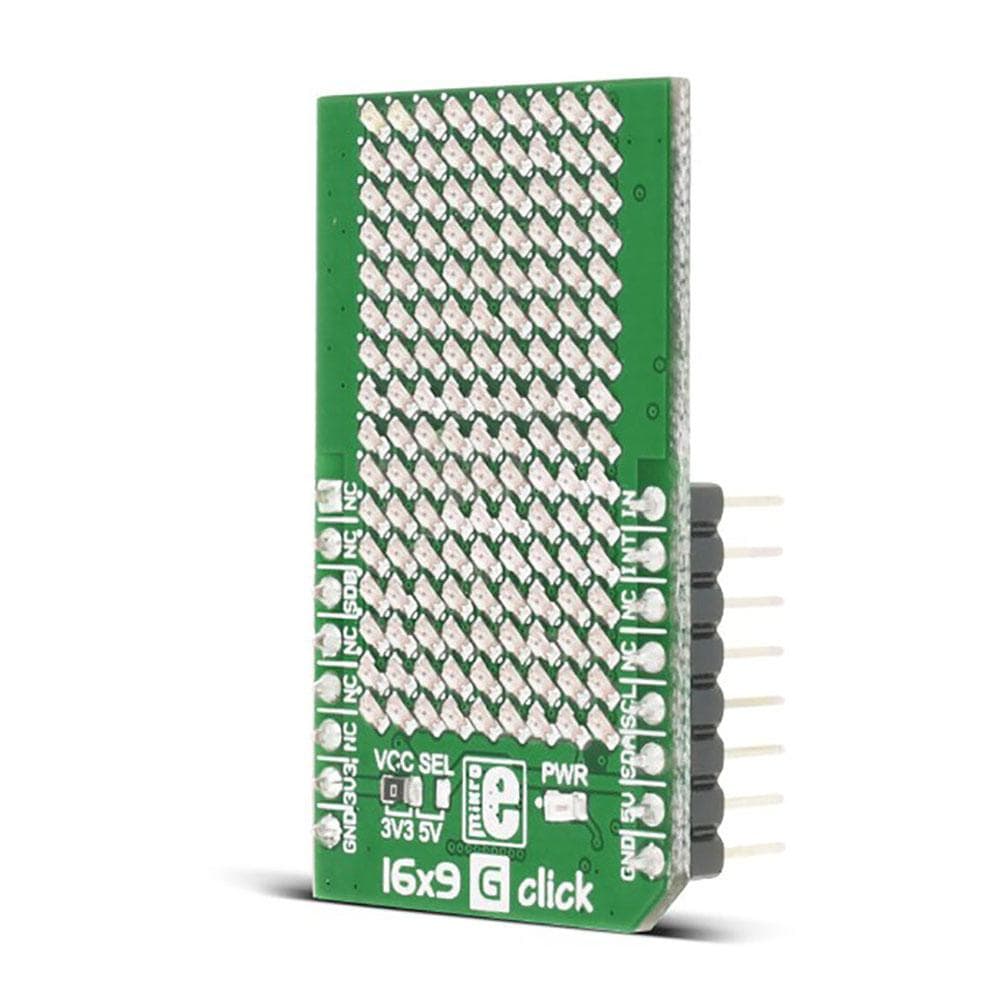
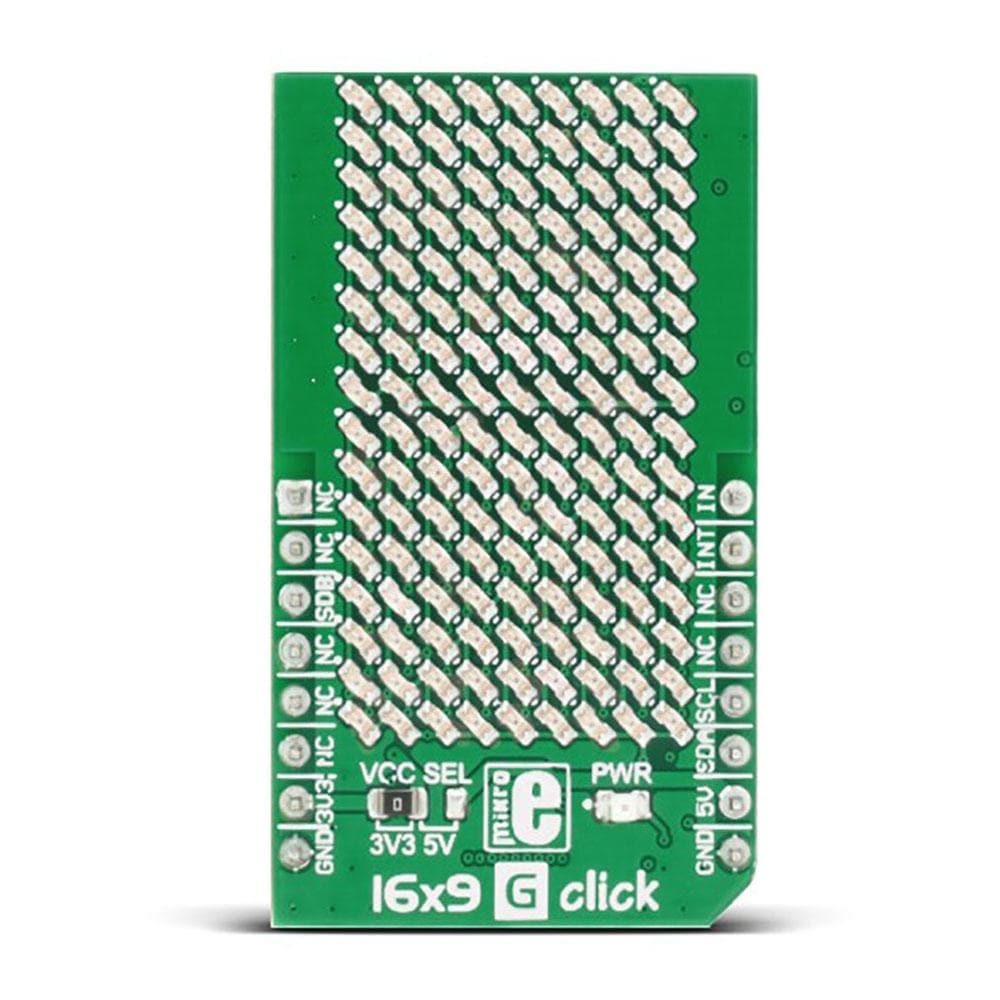
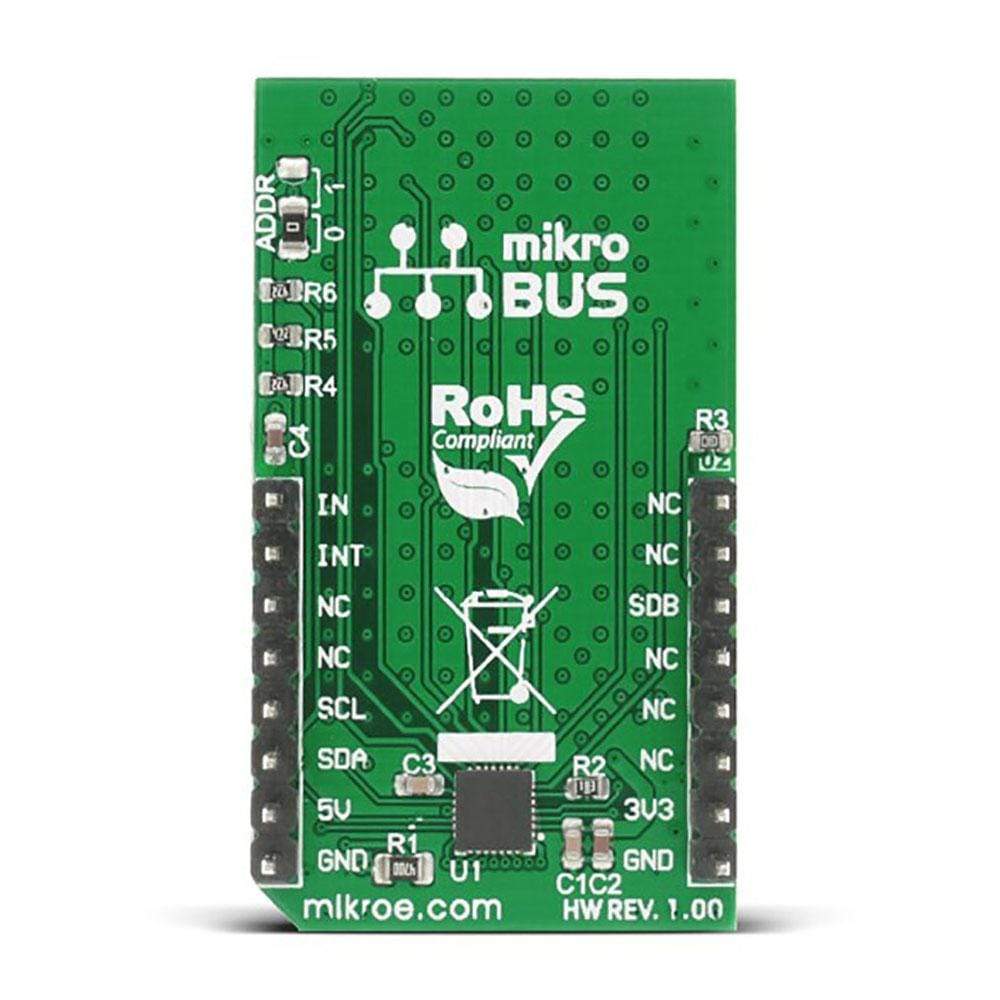
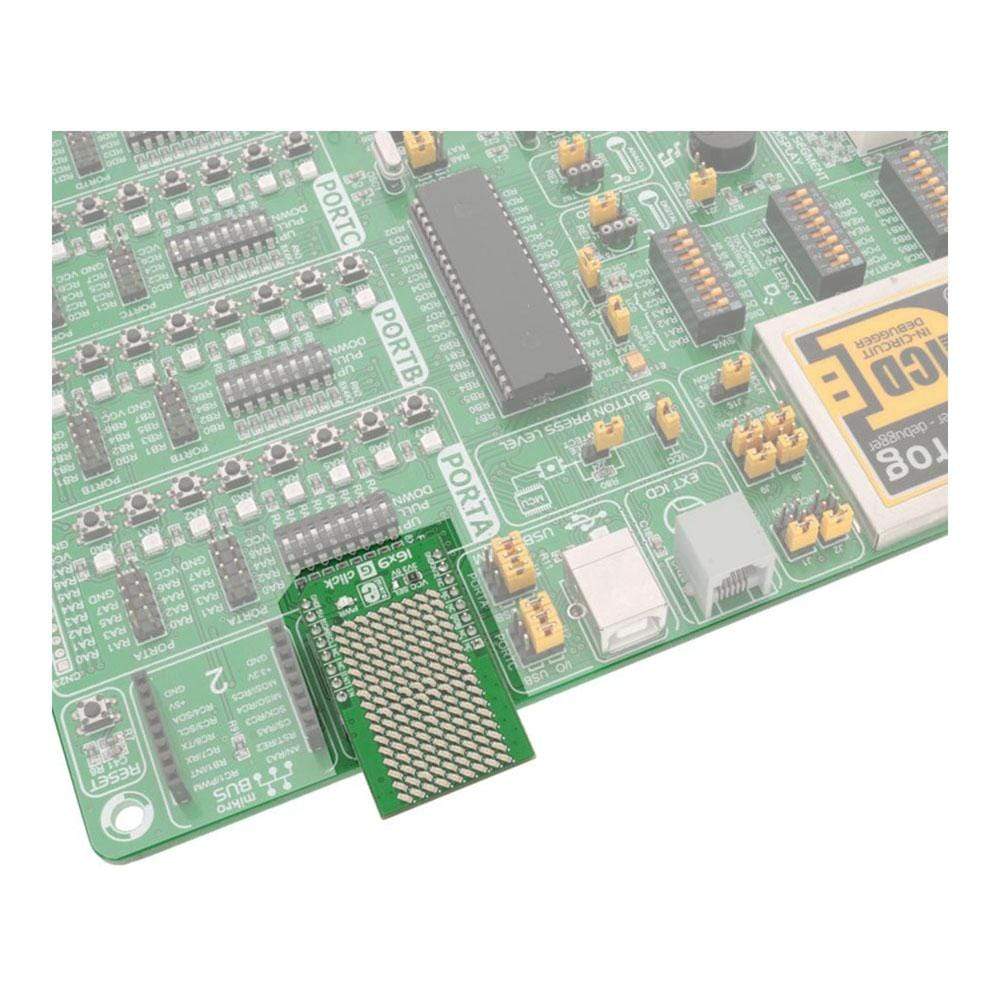
Overview
Welcome to the world of innovation with the 16x9 G Click Board! This incredible board combines functionality and style to bring your projects to life.
The 16x9 G Click Board features a vibrant green LED matrix powered by the advanced IS31FL3731 audio modulated matrix LED driver. With a dimension of 16x9, each LED can be individually controlled for both on/off functions and light intensity adjustments.
One of the key benefits of the 16x9 G Click Board is its versatility. This board is compatible with 3.3V or 5V power supplies, giving you the flexibility to integrate it into various projects seamlessly. Additionally, it communicates effortlessly with your target microcontroller via the I2C interface.
- Individually controllable LEDs for custom lighting effects
- Compatible with both 3.3V and 5V power supplies for easy integration
Unleash your creativity and let the 16x9 G Click Board be the highlight of your next electronic masterpiece. Whether you are a seasoned maker or just starting out, this board is designed to inspire and elevate your projects to new heights.
Upgrade your creations with the 16x9 G Click Board and experience the perfect blend of technology and design at your fingertips. Elevate your projects and make a statement with this cutting-edge LED matrix board!
Downloads
Bienvenue dans le monde de l'innovation avec le tableau G Click 16x9 ! Ce tableau incroyable allie fonctionnalité et style pour donner vie à vos projets.
Le G Click Board 16x9 est doté d'une matrice LED verte vibrante alimentée par le pilote LED matriciel modulé audio avancé IS31FL3731. Avec une dimension de 16x9, chaque LED peut être contrôlée individuellement pour les fonctions marche/arrêt et les réglages d'intensité lumineuse.
L'un des principaux avantages de la carte Click 16x9 G est sa polyvalence. Cette carte est compatible avec les alimentations 3,3 V ou 5 V, ce qui vous donne la possibilité de l'intégrer de manière transparente dans divers projets. De plus, elle communique sans effort avec votre microcontrôleur cible via l'interface I2C.
- LED contrôlables individuellement pour des effets d'éclairage personnalisés
- Compatible avec les alimentations 3,3 V et 5 V pour une intégration facile
Libérez votre créativité et laissez le tableau Click 16x9 G être le point culminant de votre prochain chef-d'œuvre électronique. Que vous soyez un créateur chevronné ou que vous débutiez, ce tableau est conçu pour inspirer et élever vos projets vers de nouveaux sommets.
Améliorez vos créations avec le panneau à clic 16x9 G et découvrez le mélange parfait de technologie et de design à portée de main. Améliorez vos projets et faites une déclaration avec ce panneau matriciel LED de pointe !
| General Information | |
|---|---|
Part Number (SKU) |
MIKROE-2520
|
Manufacturer |
|
| Physical and Mechanical | |
Weight |
0.02 kg
|
| Other | |
Country of Origin |
|
HS Code Customs Tariff code
|
|
EAN |
8606015079950
|
Warranty |
|
Frequently Asked Questions
Have a Question?
Be the first to ask a question about this.

